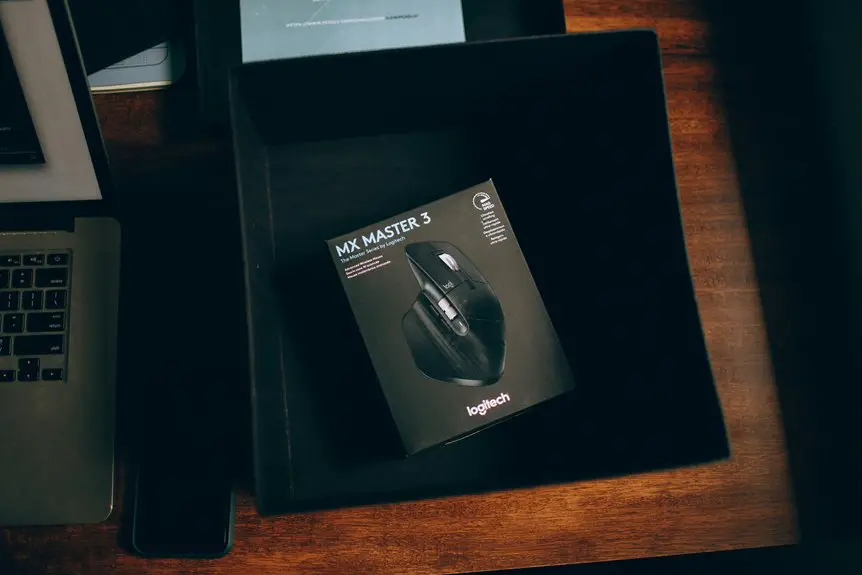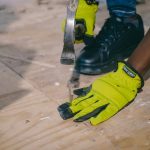When you set up your standing desk, the right mousepad can make a significant difference in your comfort and productivity. You might not realize how crucial mousepad ergonomics are for reducing strain during long hours of use. Positioning and type of mousepad play a key role in your overall setup. Understanding these elements can help you create a workspace that supports your health and efficiency. Let's explore how to optimize your mousepad for the best results.
Table of Contents
Key Takeaways
- Choose a soft, cushioned mousepad to minimize wrist strain while using a standing desk.
- Position the mousepad at elbow height to maintain a relaxed arm position during use.
- Keep the mousepad close to the keyboard to reduce unnecessary arm movement and tension.
- Select a larger mousepad for freedom of movement, enhancing comfort during extended use.
- Use a mouse with adjustable sensitivity to minimize wrist movement and fatigue.
Understanding Ergonomics in a Standing Desk Setup
When you set up a standing desk, understanding ergonomics is crucial to your comfort and productivity.
You'll want to ensure your monitor is at eye level, so you're not straining your neck. Adjust your desk height so your elbows are at a 90-degree angle when typing. Keep your wrists straight and relaxed to prevent strain. Your feet should be flat on the ground or on a footrest, distributing your weight evenly.
This position helps reduce fatigue while standing. Also, remember to take regular breaks to stretch and shift your weight.
Incorporating these ergonomic principles into your standing desk setup can enhance your work experience, keeping you comfortable and focused throughout the day.
Prioritize your posture and movement for optimal results.
Choosing the Right Mousepad for Comfort
Selecting the right mousepad can significantly enhance your comfort while using a standing desk, especially as you navigate your tasks throughout the day.
Look for a mousepad that offers a soft, cushioned surface to reduce strain on your wrist. A larger size can give you more freedom of movement, making it easier to reach for your mouse without discomfort.
If you often switch between different types of activities, consider a mousepad with a textured surface to improve precision while still being gentle on your hands.
Additionally, a non-slip backing prevents the mousepad from shifting, keeping everything stable as you work.
Optimal Mousepad Positioning and Height
How can you ensure your mousepad is positioned for optimal comfort and efficiency?
It's crucial to find the right height and placement to reduce strain while maximizing productivity. Here are three tips to guide you:
- Align with Elbow Height: Position your mousepad so your elbow is at a 90-degree angle when using the mouse. This keeps your arm relaxed and reduces unnecessary tension.
- Close Proximity: Place the mousepad within easy reach of your keyboard. This minimizes arm movement, allowing for a smoother transition between typing and navigating.
- Stable Surface: Ensure the mousepad sits on a flat, stable surface. Any wobble can disrupt your focus and accuracy while using the mouse.
Techniques to Reduce Wrist Strain
Although wrist strain can be a common issue for standing desk users, implementing a few simple techniques can make a significant difference.
First, keep your wrists in a neutral position, avoiding excessive bending. This helps minimize strain as you use your mouse. Try to maintain your mouse at elbow height, allowing your forearm to rest comfortably while you work.
Additionally, take frequent breaks to stretch your hands and wrists; simple stretches can alleviate tension. If you notice discomfort, adjust your mouse sensitivity settings to reduce the effort needed for movement.
Lastly, remember to shift your weight and change positions regularly, as it can reduce fatigue and promote better posture. Taking these steps can help you work more comfortably and productively.
Additional Accessories to Enhance Ergonomics
To enhance ergonomics while using a standing desk, consider integrating additional accessories that can significantly improve your setup.
These tools can help reduce discomfort and boost your productivity throughout the day. Here are three essential accessories you should think about:
- Footrest: A footrest encourages better posture and allows you to shift your weight, reducing fatigue in your legs.
- Anti-Fatigue Mat: Standing for long periods can be tiring. An anti-fatigue mat provides cushioning and support, making standing more comfortable.
- Monitor Stand: Elevating your monitor to eye level helps maintain proper neck and back alignment, reducing strain.
Frequently Asked Questions
Can a Mousepad Improve My Productivity at a Standing Desk?
Yes, a mousepad can enhance your productivity at a standing desk. It provides a stable surface for smoother movements, reduces strain on your wrist, and helps maintain focus, allowing you to work more efficiently throughout the day.
How Often Should I Change My Mousepad?
You should change your mousepad when it shows signs of wear, like fraying edges or a sticky surface. Regularly assessing its condition helps maintain comfort and efficiency, ensuring your workspace supports your productivity effectively.
Are There Specific Mousepads for Left-Handed Users?
Yes, there are specific mousepads designed for left-handed users. These often feature a different layout or design to accommodate left-handed movements, making your experience smoother and more comfortable while you work or play.
Do Mousepads Come in Different Materials for Different Needs?
Yes, mousepads do come in various materials to suit different needs. You'll find options like cloth for comfort, plastic for glide, and gel for wrist support. Choose the one that best fits your working style!
Can I Use a Mousepad on a Textured Desk Surface?
Yes, you can use a mousepad on a textured desk surface. Just ensure the mousepad's bottom grips well to prevent slipping. A smooth surface on top helps the mouse track accurately and enhances your experience.




